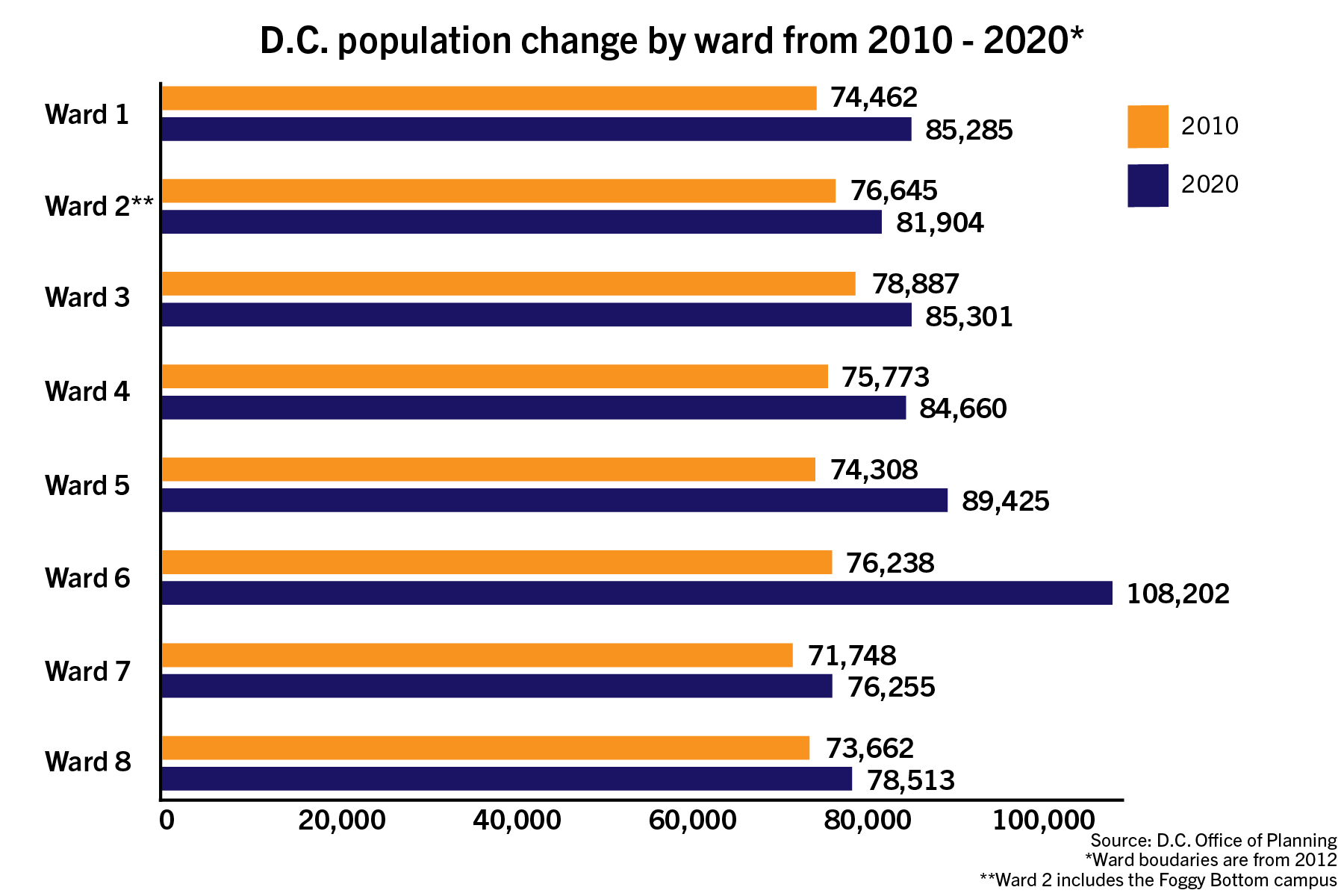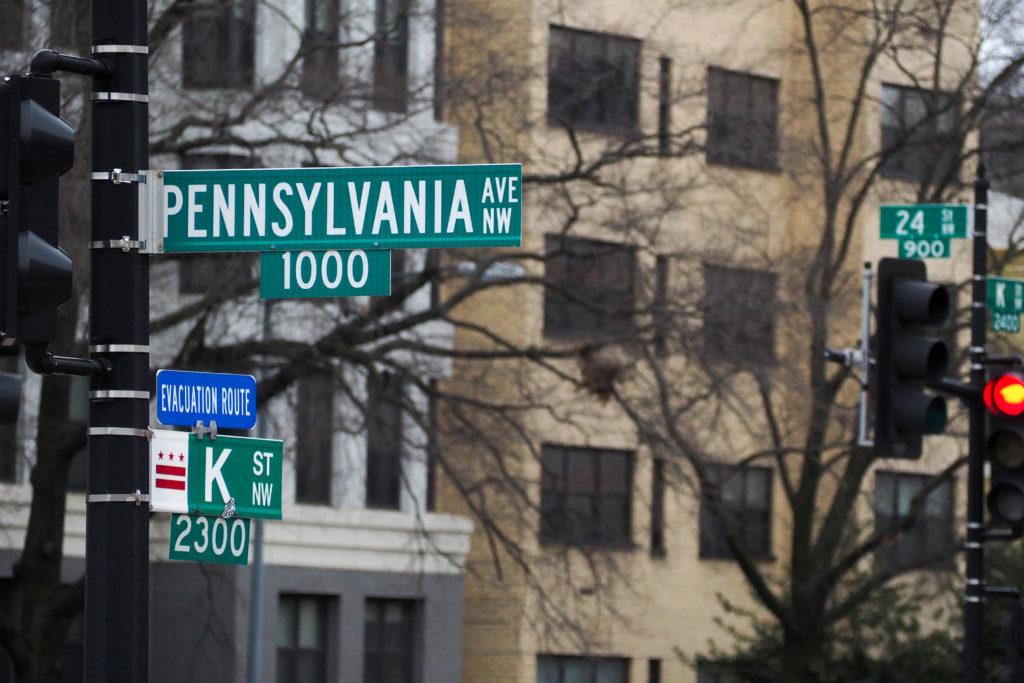The District’s ward boundaries shifted for the first time in 10 years earlier this month, and Foggy Bottom will now share a ward with additional areas of the Shaw neighborhood.
Ward 2, which includes Foggy Bottom, gained about 12,000 residents with new territory in Shaw – which was moved from Ward 6 and now completely falls within the ward’s boundaries – and lost about 2,000 residents near the Judiciary Square neighborhood to Ward 6. The D.C. Council undertook the decennial redrawing of the ward maps from September to late December, balancing the populations in each ward to provide for equal representation on the Council.
Ward 2 Council member Brooke Pinto said the new Ward 2 boundaries, especially the additions in the Shaw neighborhood, will provide “exciting opportunities” for community members. Pinto said the newly gained ground in Shaw will add more racial and ethnic diversity in a ward containing predominantly white institutions like GW and Georgetown University.
Almost 70 percent of Ward 2 residents are white, less than 10 percent are Hispanic or Latino and 9 percent are Black or African American, according to government data released in 2016.
“Due to some of these changes, our diversity in race and ethnicity will be increased and improved, which I think benefits our city and benefits our ward and my ability to represent everybody equitably,” Pinto said in an interview.
Logan Circle and the Shaw-Howard University Metro station are also now in Ward 2 instead of Ward 6 as part of the recently redrawn ward lines.
Ward 2’s population grew by about 7 percent from 2010 to 2020, making it one of the slowest-growing wards in the District, while the city as a whole grew by 14.6 percent in that same time frame. The relatively slow growth meant Ward 2 needed to gain land and population through redistricting as a way to keep its population balanced with the rest of the District’s wards.

Nicholas Anastacio | Graphics Editor
Pinto objected to an early redistricting proposal in November that would have split a portion of the North Dupont Circle neighborhood with Ward 1, a recommendation that drew criticism from members of the predominantly-LGBTQ+ community in the neighborhood for dividing the area. Lawmakers eventually scrapped plans to separate North Dupont Circle after continued public pressure.
Pinto said more than 40 Ward 2 residents testified at several D.C. Council hearings about the issue in the fall, and she was proud to keep the LGBTQ+ community in North Dupont Circle united in a single ward as their representative.
“We have dozens of LGBTQ-owned businesses and residents who have chosen to live in that neighborhood – we have our sidewalks painted rainbow there,” Pinto said. “And so it’s a real hub of inclusion and has a real history of inclusion for the LGBTQ community in particular.”
Lawmakers will focus on redrafting the borders of Advisory Neighborhood Commissions, a series of local governing bodies, from January to March, according to a timeline posted by At-Large Council member Elissa Silverman. Jeri Epstein, the chair of the Foggy Bottom and West End ANC who represents northern sections of Foggy Bottom, said she expects that the boundaries of the ANC will remain mostly unchanged.
“I think we’ll lose a little bit off the top end there, so we can see some minor changes,” Epstein said. “But really, the ANC members work together to do everything, and they don’t always agree on everything. But they eventually work together to get it all done.”
Epstein said the new Ward 2 territory in the Shaw neighborhood will bring a larger entertainment industry and more small businesses to the ward than local officials are used to supervising. She said Shaw will bring Ward 2 more local commerce and business license applications for commissioners to review.
“The only thing that I think Shaw will bring us in terms of more issues will be that they have more entertainment – they look for more entertainment licenses, more bar licenses, more restaurant licenses than we normally get,” she said. “We have some, but I think that their part of town is growing in terms of restaurants and outdoor venues and so forth.”
Joel Causey, the vice chair of the Foggy Bottom and West End ANC, said growing populations have overwhelmed some ANCs across the city and made it more difficult for commissioners to effectively represent their constituencies, which are usually set at 2,000 people but have grown beyond that more recently.
“What’s happened in some areas over the last 10 years is that some ANCs have grown exponentially beyond the 2,000 people, and it may have affected the ability for the ANC to represent all those individuals, just by sheer volume,” Causey said.
Causey said officials from universities like GW and Georgetown University have stayed involved and lobbied in the redistricting process through hearings and meetings, and it was unlikely that any part of campus would be split between different ANCs. He said since five out of the eight commissioners represent at least some part of campus, the GW community plays a “large role” in most zoning and policy decisions that the ANC makes.
“Howard University, GW and Georgetown all pretty much are areas that I think are largely unaffected by a serious change,” Causey said. “I would imagine that had it had more of an effect, universities probably would have played a larger role, obviously.”








